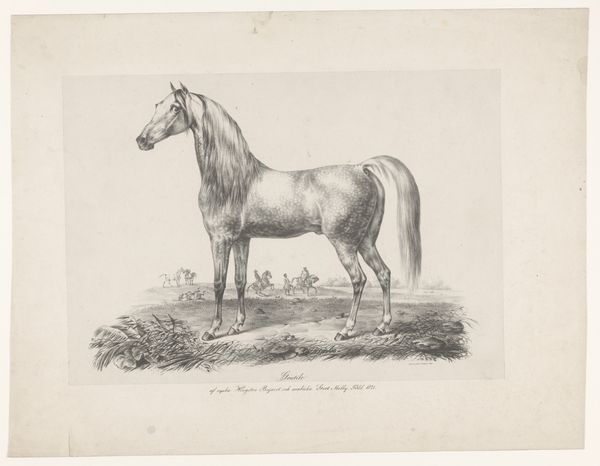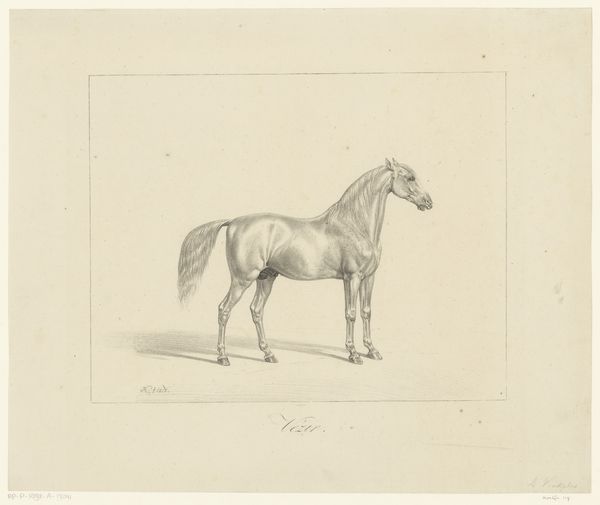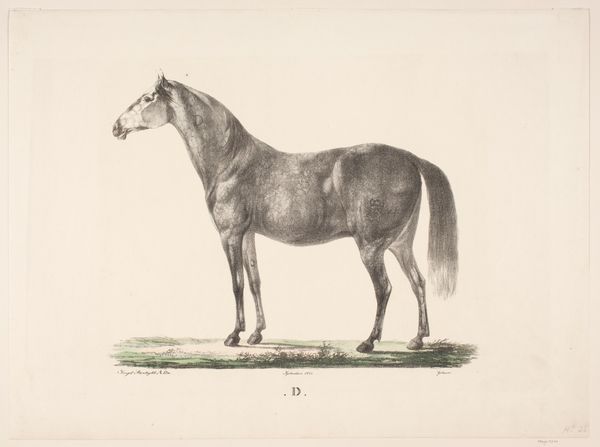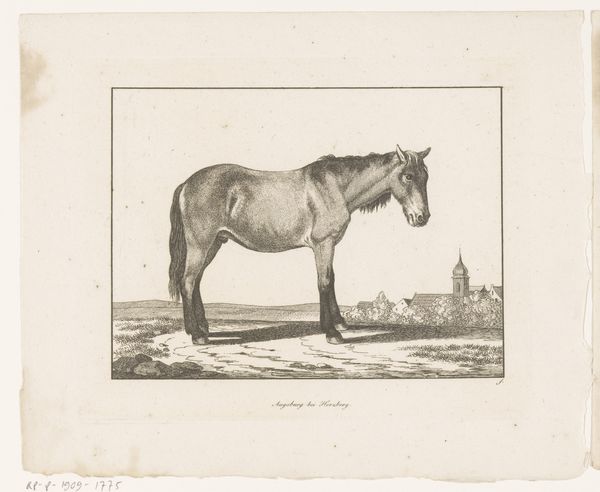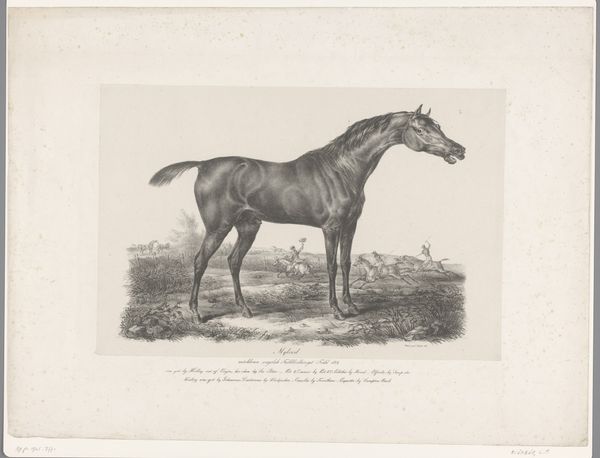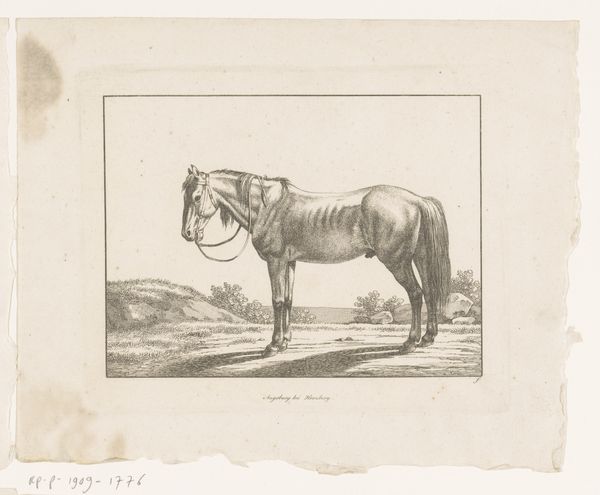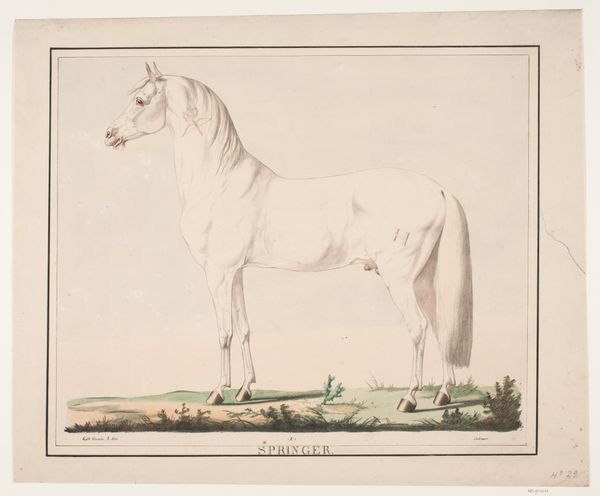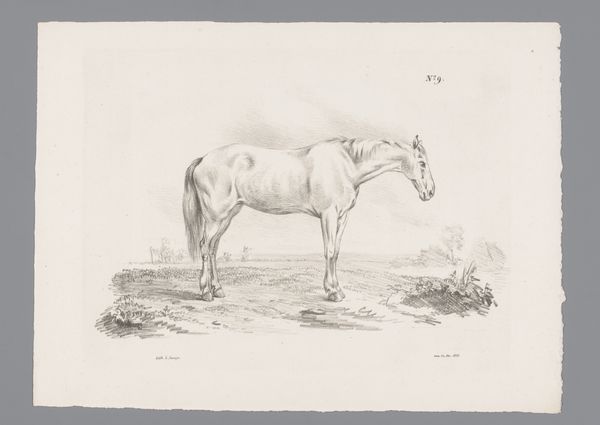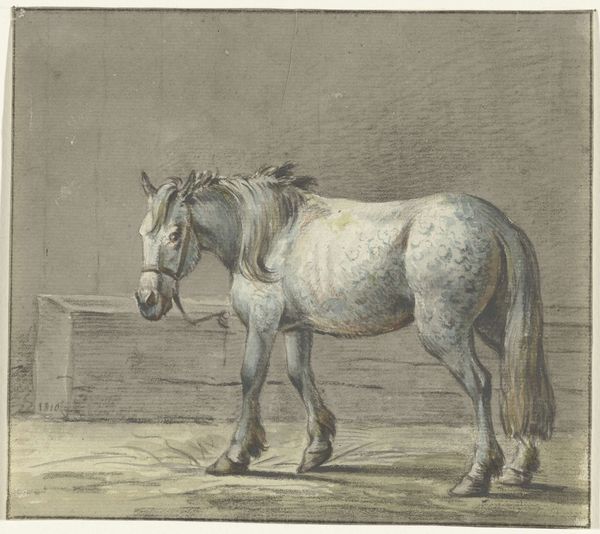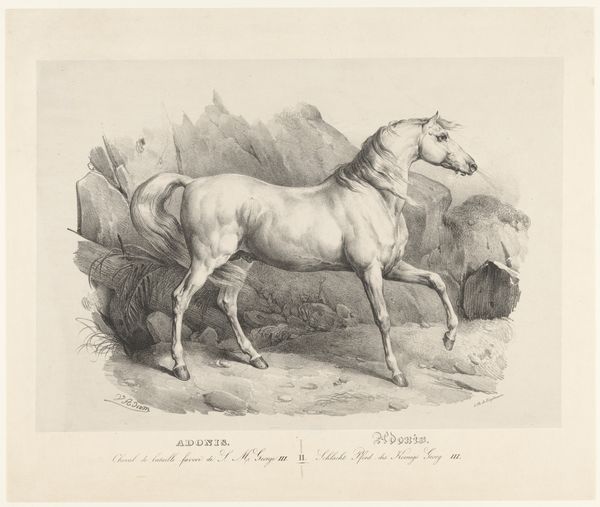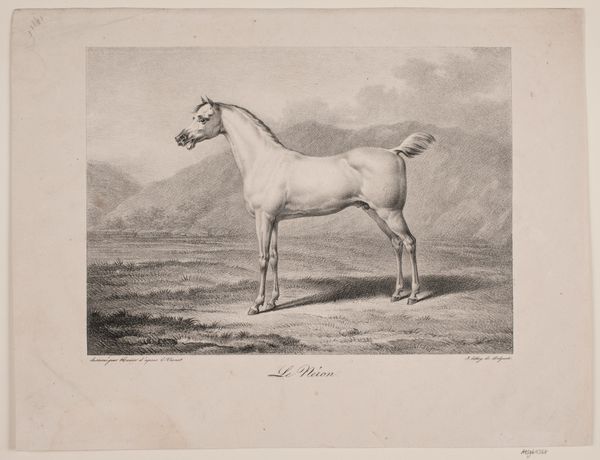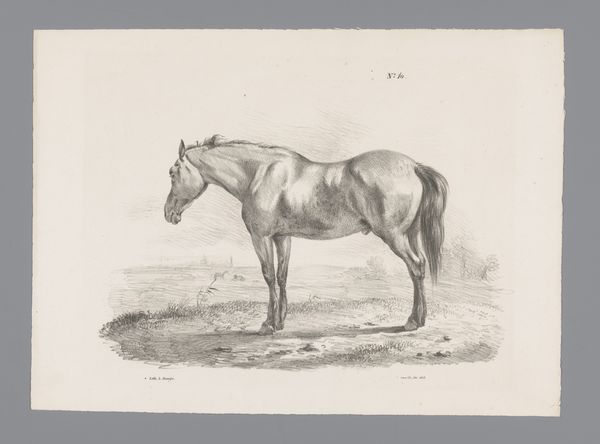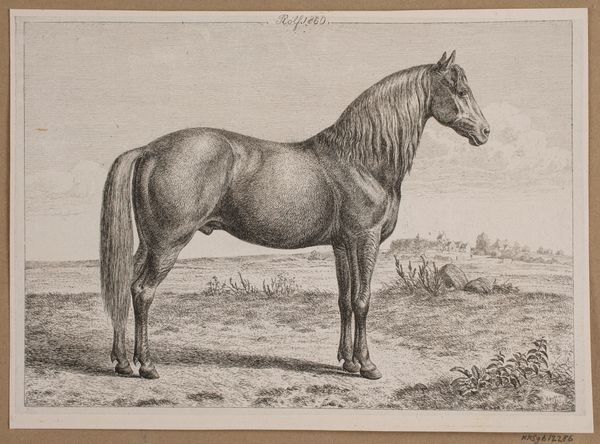
drawing, graphite
#
portrait
#
drawing
#
horse
#
graphite
#
realism
Dimensions: height 199 mm, width 237 mm
Copyright: Rijks Museum: Open Domain
This detailed drawing of an African horse, an artwork by Eugène Verboeckhoven, captures the animal with striking precision. Yet, the horse's lack of mane and tail transforms it into an intriguing symbol. Historically, horses have embodied power, freedom, and nobility across cultures. Think of the steeds of ancient Greek heroes or the warhorses of medieval knights. However, by stripping this horse of its mane and tail, Verboeckhoven alters its symbolic value. This could signify domestication, control, or perhaps even a loss of wildness. Consider how horses are depicted in classical equestrian statues. Their flowing manes and tails often accentuate their strength and vitality. The absence of these features here prompts us to reflect on how symbols can be manipulated to convey complex, sometimes contradictory, meanings. The emotional impact is subtle yet pervasive, inviting us to consider the multifaceted relationship between humans and animals.
Comments
No comments
Be the first to comment and join the conversation on the ultimate creative platform.
